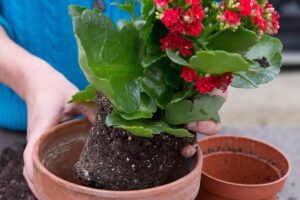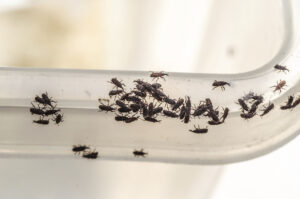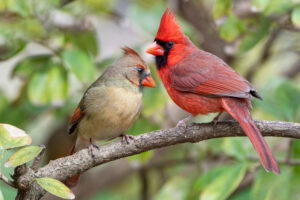
The phenomenon of nyctinasty, where certain plants exhibit rhythmic opening and closing movements of their leaves or flowers in response to environmental changes, offers a fascinating insight into the botanical world. From the graceful folding of Mimosa pudica’s leaves to the delicate blossoms of Oenothera biennis, nyctinastic plants demonstrate remarkable adaptability and ecological significance. This article delves into the mechanisms, benefits, notable examples, and cultivation tips for observing these captivating botanical behaviors.
I. Introduction to Nyctinasty
A. Definition and Significance
Nyctinasty, derived from the Greek words “nyx” (night) and “nastos” (to close), refers to the nocturnal movements of plant parts, primarily leaves or flowers. This phenomenon has intrigued botanists for centuries, highlighting the dynamic responsiveness of plants to their surroundings and the intricate mechanisms underlying their behavior.
B. Evolutionary Adaptations
The evolutionary origins of nyctinasty can be traced back to adaptive strategies that enhance the survival and reproductive success of plants in diverse habitats. By closing their leaves or flowers at night, plants can protect against herbivores, optimize opportunities for pollination, and conserve resources, contributing to their ecological resilience and fitness.
C. Examples of Nyctinastic Plants
Numerous plant species exhibit nyctinastic movements, each with unique mechanisms and ecological roles. Examples include Mimosa pudica, Oxalis triangularis, and Oenothera biennis, which showcase the diversity and complexity of nyctinastic behaviors in the plant kingdom.
II. Mechanism Behind Nyctinasty
A. Environmental Stimuli
1. Light Sensitivity
Plants that undergo nyctinastic movements are sensitive to changes in light intensity, particularly the transition from daylight to darkness. Photoreceptor proteins in plant cells perceive variations in light levels and trigger physiological responses that modulate leaf or flower movements.
2. Temperature Fluctuations
In addition to light cues, temperature changes can also influence nyctinasty in certain plant species. Cooler temperatures at night may signal the onset of darkness and trigger hormonal changes that lead to leaf or flower closure, optimizing plant responses to nocturnal conditions.
B. Hormonal Regulation
1. Phytohormones Involved
Phytohormones, such as auxins, gibberellins, and abscisic acid, play pivotal roles in regulating nyctinastic movements. These signaling molecules interact with cellular receptors and initiate biochemical pathways that modulate turgor pressure, cell elongation, and gene expression in response to environmental cues.
2. Circadian Rhythms
The circadian clock, an internal timing mechanism present in plants, coordinates nyctinastic movements with daily cycles of light and darkness. Circadian rhythms regulate the timing of physiological processes, including leaf or flower movements, ensuring optimal responsiveness to environmental stimuli.
C. Cellular Processes
1. Turgor Pressure Changes
Nyctinastic movements are driven by changes in turgor pressure within specialized motor cells located at the base of leaves or flowers. As these cells gain or lose water in response to hormonal signals, they undergo reversible changes in shape and volume, causing rapid movements that result in leaf or flower closure.
2. Motor Cell Movement
Specialized motor cells, also known as pulvinar cells, are responsible for executing nyctinastic movements in plants. These cells undergo rapid changes in turgor pressure and cell shape in response to hormonal signals, leading to coordinated movements that enable plants to adjust their leaf or flower orientation.
III. Benefits and Ecological Implications
A. Protection from Predators
1. Defense Mechanisms
Nyctinastic movements help plants defend against herbivores and other predators by reducing exposure to potential threats during nighttime hours. Closed leaves or flowers may deter herbivores or make them less conspicuous targets, enhancing plant survival and fitness.
2. Camouflage Strategies
Some plants exhibit nyctinastic movements as part of camouflage strategies to evade detection by predators. By closing their leaves or flowers at night, these plants may blend in with their surroundings or resemble other objects, minimizing the risk of predation and increasing their chances of survival.
B. Facilitation of Pollination
1. Nocturnal Pollinators
Nyctinastic movements can facilitate pollination by attracting nocturnal pollinators, such as moths, bats, or beetles, which are active during nighttime hours. Open flowers or exposed reproductive structures may emit fragrances or produce nectar to entice pollinators, enhancing reproductive success.
2. Reproductive Success
By synchronizing floral opening or closing with nocturnal pollinator activity, plants can optimize their reproductive success and ensure efficient pollen transfer between individuals. Nyctinastic movements enhance pollination strategies and contribute to the genetic diversity and viability of plant populations.
C. Resource Conservation
1. Water Loss Reduction
Nyctinastic movements help plants conserve water and reduce transpiration rates during periods of environmental stress, such as hot or dry conditions. Closed leaves or flowers minimize surface exposure and limit water loss through stomatal pores, preserving moisture reserves and maintaining cellular hydration.
2. Energy Efficiency
By closing their leaves or flowers at night, plants can conserve energy and allocate resources more efficiently, redirecting metabolic activity towards essential processes such as growth, repair, and reproduction. Nyctinasty represents a strategic adaptation for optimizing resource allocation and enhancing plant fitness.
IV. Notable Examples of Nyctinastic Plants
A. Mimosa pudica (Sensitive Plant)
1. Description
Mimosa pudica, also known as the sensitive plant or touch-me-not, is a tropical perennial famous for its rapid leaf movements in response to touch or environmental stimuli. Its compound leaves fold inward or droop downward when disturbed, showcasing a remarkable nyctinastic behavior.
2. Leaf Folding Mechanism
Leaf folding in Mimosa pudica is mediated by specialized pulvinar cells located at the base of leaflets, which respond to mechanical stimuli by rapidly losing turgor pressure and collapsing. This rapid movement deters herbivores and protects the plant from physical damage, illustrating the adaptive significance of nyctinasty.
B. Oxalis triangularis (Purple Shamrock)
1. Characteristics
Oxalis triangularis, commonly known as the purple shamrock or love plant, is a flowering perennial prized for its triangular purple leaves and delicate pink flowers. Its leaves exhibit nyctinastic movements, folding downward or closing at night and reopening during the daytime.
2. Nighttime Movement
The nyctinastic movements of Oxalis triangularis are regulated by environmental cues and hormonal signals, with leaf closure coinciding with decreasing light levels at dusk. This behavior enhances the plant’s defense mechanisms and conserves resources, contributing to its overall health and vigor.
C. Oenothera biennis (Evening Primrose)
1. Floral Opening Behavior
Oenothera biennis, also known as evening primrose or sundrops, is a biennial flowering plant native to North America. Its yellow flowers open in the evening and close during the daytime, a nyctinastic behavior that attracts nocturnal pollinators and optimizes reproductive success.
2. Pollinator Attraction
The nyctinastic behavior of Oenothera biennis enhances its attractiveness to nocturnal pollinators, such as moths and bees, which are essential for effective pollen transfer and seed production. By opening its flowers at night, the plant maximizes opportunities for pollination and ensures genetic diversity within its population.
V. Cultivation and Observation Tips
A. Growing Conditions
1. Light and Temperature Requirements
Provide nyctinastic plants with suitable growing conditions, including adequate sunlight or partial shade, depending on the species, and moderate temperatures conducive to healthy growth and flowering. Maintain a consistent environment to support nyctinastic behaviors and optimize plant performance.
2. Soil and Watering Needs
Ensure well-drained soil and appropriate moisture levels to promote root development and nutrient uptake in nyctinastic plants. Water plants thoroughly, allowing the soil to dry slightly between waterings, and avoid overwatering or waterlogged conditions that can lead to root rot or fungal diseases.
B. Observational Techniques
1. Timing of Movements
Observe nyctinastic plants during the evening and nighttime hours to witness leaf or flower movements firsthand. Note the timing and duration of opening and closing responses, as well as any environmental cues or stimuli that may trigger these movements.
2. Documentation and Research
Keep detailed records or photographic documentation of nyctinastic behavior in plants, documenting observations, patterns, and environmental factors that influence leaf or flower movements. Share findings with fellow gardeners or botanists to contribute to our understanding of plant behavior and adaptation.
C. Appreciating Nature’s Mysteries
Nyctinastic plants offer a captivating glimpse into the mysteries of the natural world, highlighting the dynamic interactions between plants and their environments. Take time to appreciate the beauty and complexity of these botanical behaviors and cultivate a deeper connection with nature’s wonders.
In conclusion, nyctinasty represents a fascinating botanical phenomenon characterized by rhythmic opening and closing movements of plant parts in response to environmental changes. From the protective mechanisms of Mimosa pudica to the pollination strategies of Oenothera biennis, nyctinastic plants exemplify nature’s ingenuity and adaptability. By understanding the mechanisms, benefits, and cultivation tips associated with nyctinastic plants, we can deepen our appreciation for the natural world and foster a greater sense of wonder and curiosity in botanical marvels.







